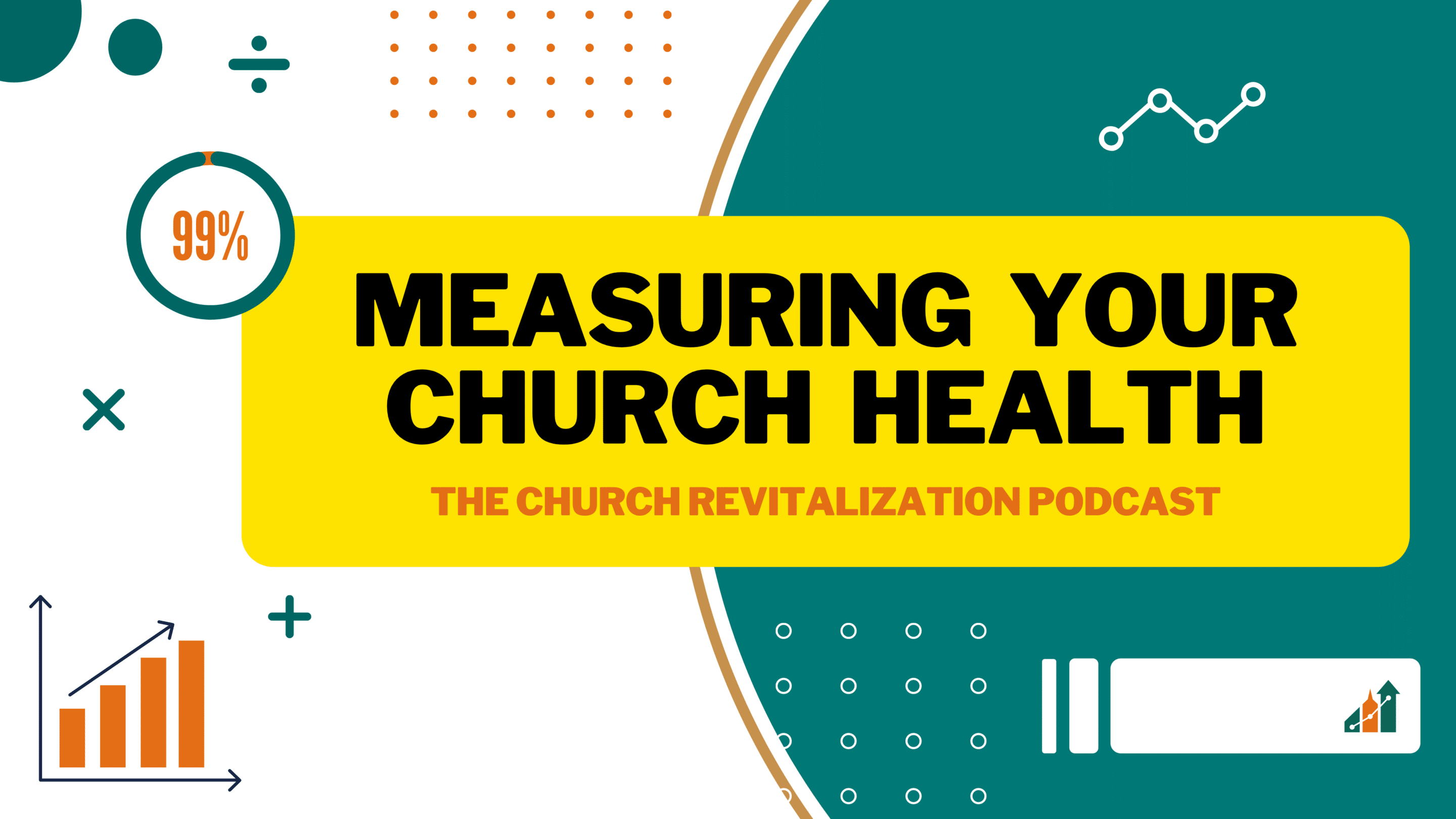The Church Revitalization Podcast – Episode 129
Understanding the state of your church health is an essential aspect of good leadership. You cannot help your church grow and have a greater impact without knowing what’s working and what isn’t.
At The Malphurs Group, we use a tool called the Church Ministry Analysis to give leaders a church health score based on an analysis of six key factors. Those factors are:
- Great Commission Focus
- Healthy Core Values
- Discipleship Pathway Effectiveness
- Vision Clarity
- Strategy Deployment
- and Leadership Culture.
When you go for an annual physical, the doctor will measure a series of things–blood pressure, cholesterol, blood counts, etc. No one indicator on its own gives a clear picture of your health. But in total, these metrics show your overall health trends and can show any significant red flags. Likewise, the Church Ministry Analysis is a tool that looks at all of these metrics in tandem to paint a picture of your church’s health trends.
Our team made changes to how we collect this data and process it at the beginning of 2021. With over a year of data from hundreds and hundreds of participants, we want to share with you the state of the average church. These averages include churches that range from under 100 to more than 1,000.
The primary question for you to explore is–how does your church stack up? If your church took the Church Ministry Analysis, how would your church score in these areas? Is your church healthier or less healthy than the average?
Subscribe below to never miss an episode.
[podcast_subscribe id=”8838″]
Overall Church Health Score – Average: 57
The overall health score is an average of the other six scores. On its own, it tells you very little about the church’s health. However, the following ranges are used to give you a barometer for healthiness:
- Healthy: 86-100
- Moderately Healthy: 66-85
- Moderately Unhealthy: 41-65
- Unhealthy: 0-40
For context, it’s very difficult to score in the healthy category or the unhealthy category. Churches that manage either of the extremes are outliers. Churches may score in the healthy or unhealthy category for one section, but not overall. The majority of the churches that have participated in the Church Ministry Analysis score towards the middle of the moderately unhealthy rating, as reflected in the overall health score average.
Great Commission Focus – Average: 66
The area of Great Commission Focus, what we call “mission” for shorthand, in nearly every instance was the highest-scoring category for most churches. This is a reflection of the reality that most churches have a written mission statement and an intention to live out the Great Commission. However, the reason that this score isn’t even higher is due to the lack of communication of the mission and a lack of commitment to following through. In the CMA, we assess how well a church uses its mission as a tool for driving the church in a unified direction towards disciple-making. To this end, many churches fail. The intentions are correct, but the execution is often poor.
Healthy Core Values – Average: 62
Like with Mission, churches are generally good at stating that they value all of the right things. They have a desire to see disciples grow, mature, and reach more people. However, when it comes to personal responsibility for spiritual growth and maturity, this is where things tend to fall apart. The aspects of a healthy discipleship culture that can be outsourced to the “professional Christians” (the pastors and staff) tend to score highly. But there are aspects of discipleship that cannot be delegated; disciples must take ownership of their own faith and growth. In these areas, churches tend to struggle more.
Discipleship Pathway Effectiveness – Average: 50
Honestly, before doing this dive into the data, I would have assumed that the lowest-scoring area across churches was Vision. But when we ran the numbers, Discipleship Pathway Effectiveness was the lowest. On further reflection, this jives. On average, the churches that took the CMA were only declining by approximately 1% per year from 2015-2019. But from 2019 to 2021, they decreased by 40%. This is worse than the national averages by more than a third.
What’s driving this decline and the inability to recapture lost ground from the pandemic? Largely, churches were not particularly effective in disciple-making prior to the pandemic. As COVID took its shots at the church’s programs and way of “doing church,” many of the churches were not able to adjust and adapt. Put another way, many churches have a program-driven approach to discipleship. That approach was already ineffective (based on the plateau) but became untenable with the pandemic. Their long-term health will be determined by their ability to re-orient their ministry to process-driven discipleship and establishing a clear pathway for engaging in making and maturing disciples.
Vision Clarity – Average: 52
While it wasn’t the lowest-scoring area, Vision Clarity was close to the bottom. A church that has a clear mission statement but lacks a clear vision is like a family that agrees to go on a road trip but doesn’t define the destination. Imagine the arguments in that minivan! Similarly, most churches assume they have unity because they agree about the centrality of the Great Commission and have the same doctrinal views. But this isn’t enough. Churches must ask the question: where are we going? Only when you have a clear, exciting picture of God’s future for your church will you gain real unity.
Strategy Deployment – Average: 57
On the whole, churches are good at making plans. They’re just really bad at following through. The strategy deployment section of the CMA measures your church’s ability to plan in key areas and execute. The mistake pastors make is to take a strategy-first solution to deeper problems. Once you deal with the other areas like Discipleship Pathway and Vision, the strategy questions start to answer themselves. From there, the church needs to stay focused and be diligent to do what it says. It is the job of leadership to hold people accountable to tasks, timelines, and deliverables.
Leadership Culture – Average: 54
Our founder, Aubrey Malphurs, once said, “As the leadership goes, so goes the church.” This is true. All of the other aspects of church health are window dressing without effective leadership. The reason many churches score low in this category is not because their pastors are viewed as bad leaders. Quite the opposite. Usually the church’s senior leaders are viewed as effective.
Where things tend to fall apart is when we start to assess the church’s ability to raise up more and better leaders. That is to say, the church lacks clear systems for recruiting more leaders and helping them reach deeper levels of effectiveness. If we believe Ephesians 4 is true, then the true call of leadership is to equip the whole congregation for ministry. On this count, most churches lack the systems, processes, and focus. While Strategic Envisioning helps with all of the other aspects of church health, this section is addressed by designing an effective Leadership Pipeline.
So, how do you think your church would stack up against these averages? We don’t believe success should be measured in comparison to other churches but against the standard of your full potential. Your church can take the Church Ministry Analysis by registering here.
The Church Ministry Analysis includes a custom-written report (not an auto-generated report) and includes a free virtual consultation–all for only $99. Get a check-up on your health, and uncover how you can reach your potential. From now until March 9, 2022, you can get 50% off the Church Ministry Analysis by using code STATE when you register. That means for $49.50, you get a custom-written report and a virtual consultation with a Certified Guide.
BONUS: Watch this episode on YouTube.

Scott Ball is the Vice President and a Lead Guide with The Malphurs Group. He lives in East Tennessee with his wife and two children. (Email Scott).


